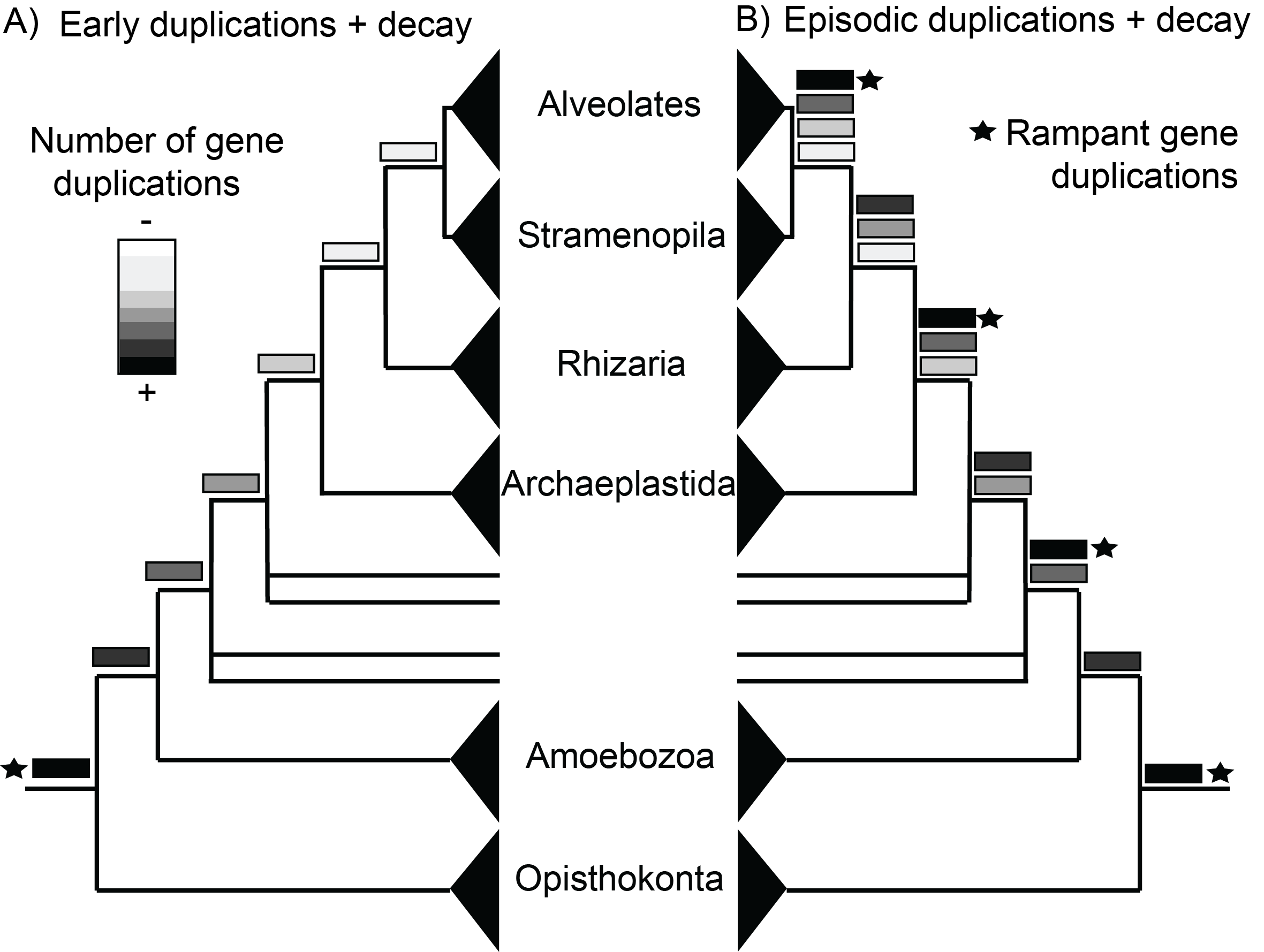

Gene duplication and gene loss represent prevalent forms of gene rearrangement in eukaryotic evolution, profoundly influencing the diversity of major clades such as Viridiplantae, Metazoa, and Fungi. New phylogenetic tools, employing gene tree-aware methods, now incorporate gene duplications and losses in their algorithms due to their prevalence in eukaryotes. However, evidence suggests that varying rates of these events at certain points in eukaryotic history can challenge these methods (Cerón-Romero et al. 2022).

This highlights the necessity of better understanding the dynamics of gene duplicate occurrence and decay throughout eukaryotic history. I am particularly interested in generating hypotheses and developing approaches to test them in this context. For instance, given the critical role of rampant genome duplications in the emergence of some eukaryotic clades, we can test at least the two hypotheses regarding the occurrence of gene duplications and losses illustrated in the figure above: A) Rampant duplications occurred early in eukaryotic evolution, followed by gradual gene loss, and B) Rampant duplications occurred episodically in eukaryotic history, followed by gradual gene loss (Cerón-Romero, In prep).
Department of Biology
Case Western Reserve University
Clapp Hall Room 307
2080 Adelbert Road
Cleveland, OH 44106-7078
mario.ceronromero [at] case [dot] edu
© 2023. Mario A. Cerón-Romero